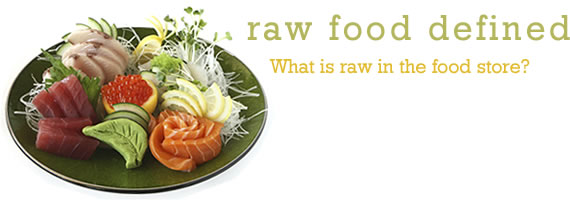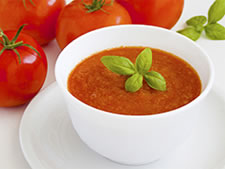Health Tips - Raw food defined

The benefits of eating raw food are many, some of which are listed in the health tip Unheated Food. But which foods in a store are actually raw?
Raw food is normally defined as any food not heated above 118° F. Food that was never heated, such as an apple or celery, is obviously raw. Some food that is warmed up but not heated above 118 degrees would also be considered raw, such as a raw ingredient soup that has not been warmed over 118° F.

In a food store, if you can find cold-smoked fish, that means that the smokehouse temperatures were below 100° F and so the fish is still considered raw. But, generally-speaking, unless you are in the produce section buying fruits and vegetables or in the meat and fish section buying fresh fish and meat, very little else in the store is truly raw.
By law, food in packages, jars, and cans must be pasteurized before it is packaged. The temperature during pasteurization can go as high as 280 °F. Everything in the frozen section is at least flash-pasteurized, which involves heating around 160 °F. For example, Coconut Bliss ice cream says,”We are required to pasteurize our mix to around 180 ° F before we freeze it.”
“Fresh” juice is also cooked (flash-pasteurized)! Read more about this in the Juice health tip.
In the food industry, there are different definitions about what is okay to be labeled “raw”. For example, “raw honey” is not really raw. Read more on that in the health tip on Honey. Even the cheese industry has its own definition of raw. Most cheeses labeled raw are not actually raw, based on the “not heated above 118° F” common definition.
Much food is easily made raw on your own without buying packaged, factory-made food. Try the recipes in my Recipes section, to get started on some healthy, quickly-made food!
Eating a high percent of raw food is your least expensive health insurance!
Dr. Pepi
April 6, 2011
